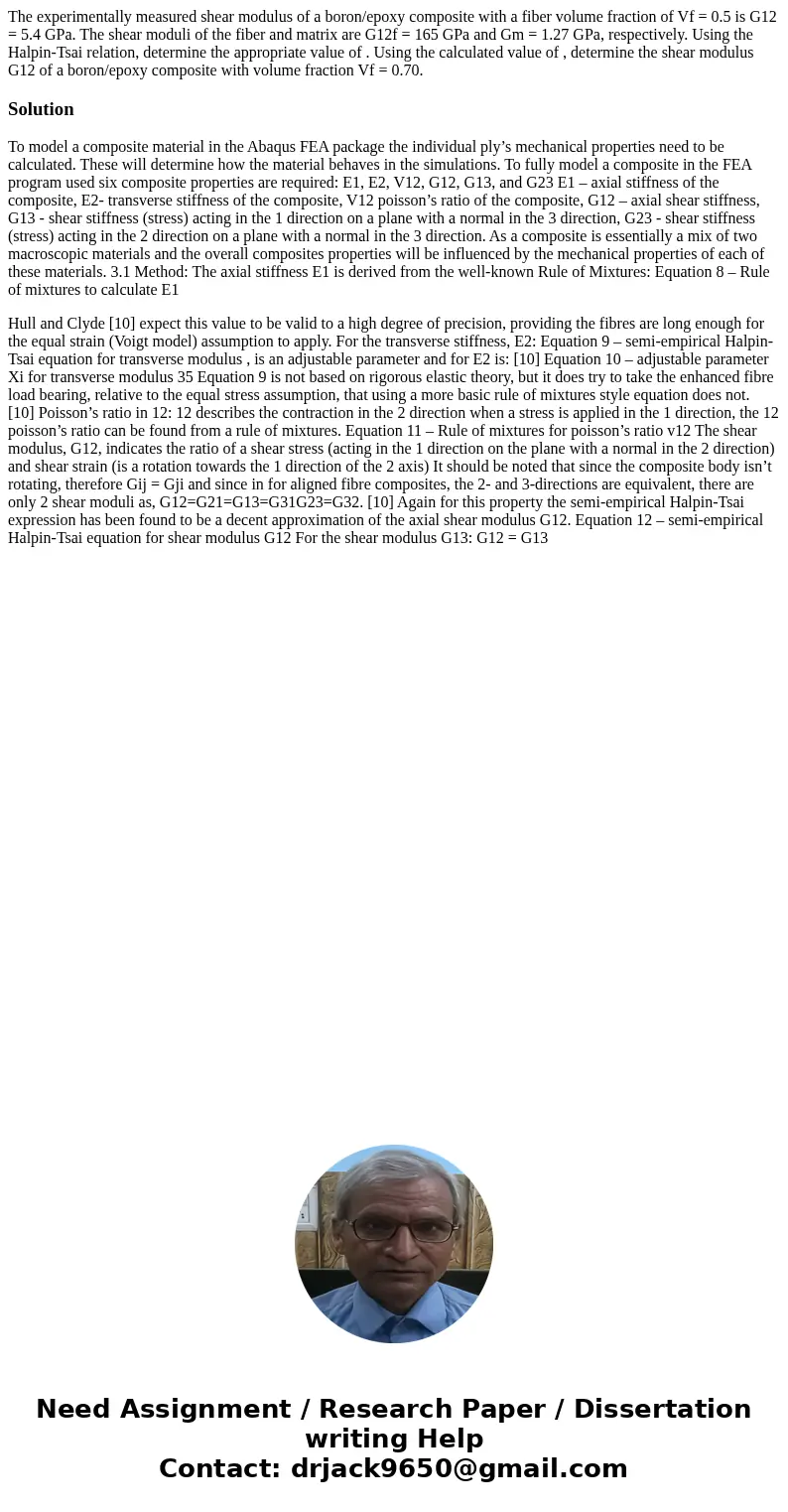The experimentally measured shear modulus of a boronepoxy co
The experimentally measured shear modulus of a boron/epoxy composite with a fiber volume fraction of Vf = 0.5 is G12 = 5.4 GPa. The shear moduli of the fiber and matrix are G12f = 165 GPa and Gm = 1.27 GPa, respectively. Using the Halpin-Tsai relation, determine the appropriate value of . Using the calculated value of , determine the shear modulus G12 of a boron/epoxy composite with volume fraction Vf = 0.70.
Solution
To model a composite material in the Abaqus FEA package the individual ply’s mechanical properties need to be calculated. These will determine how the material behaves in the simulations. To fully model a composite in the FEA program used six composite properties are required: E1, E2, V12, G12, G13, and G23 E1 – axial stiffness of the composite, E2- transverse stiffness of the composite, V12 poisson’s ratio of the composite, G12 – axial shear stiffness, G13 - shear stiffness (stress) acting in the 1 direction on a plane with a normal in the 3 direction, G23 - shear stiffness (stress) acting in the 2 direction on a plane with a normal in the 3 direction. As a composite is essentially a mix of two macroscopic materials and the overall composites properties will be influenced by the mechanical properties of each of these materials. 3.1 Method: The axial stiffness E1 is derived from the well-known Rule of Mixtures: Equation 8 – Rule of mixtures to calculate E1
Hull and Clyde [10] expect this value to be valid to a high degree of precision, providing the fibres are long enough for the equal strain (Voigt model) assumption to apply. For the transverse stiffness, E2: Equation 9 – semi-empirical Halpin-Tsai equation for transverse modulus , is an adjustable parameter and for E2 is: [10] Equation 10 – adjustable parameter Xi for transverse modulus 35 Equation 9 is not based on rigorous elastic theory, but it does try to take the enhanced fibre load bearing, relative to the equal stress assumption, that using a more basic rule of mixtures style equation does not. [10] Poisson’s ratio in 12: 12 describes the contraction in the 2 direction when a stress is applied in the 1 direction, the 12 poisson’s ratio can be found from a rule of mixtures. Equation 11 – Rule of mixtures for poisson’s ratio v12 The shear modulus, G12, indicates the ratio of a shear stress (acting in the 1 direction on the plane with a normal in the 2 direction) and shear strain (is a rotation towards the 1 direction of the 2 axis) It should be noted that since the composite body isn’t rotating, therefore Gij = Gji and since in for aligned fibre composites, the 2- and 3-directions are equivalent, there are only 2 shear moduli as, G12=G21=G13=G31G23=G32. [10] Again for this property the semi-empirical Halpin-Tsai expression has been found to be a decent approximation of the axial shear modulus G12. Equation 12 – semi-empirical Halpin-Tsai equation for shear modulus G12 For the shear modulus G13: G12 = G13

 Homework Sourse
Homework Sourse